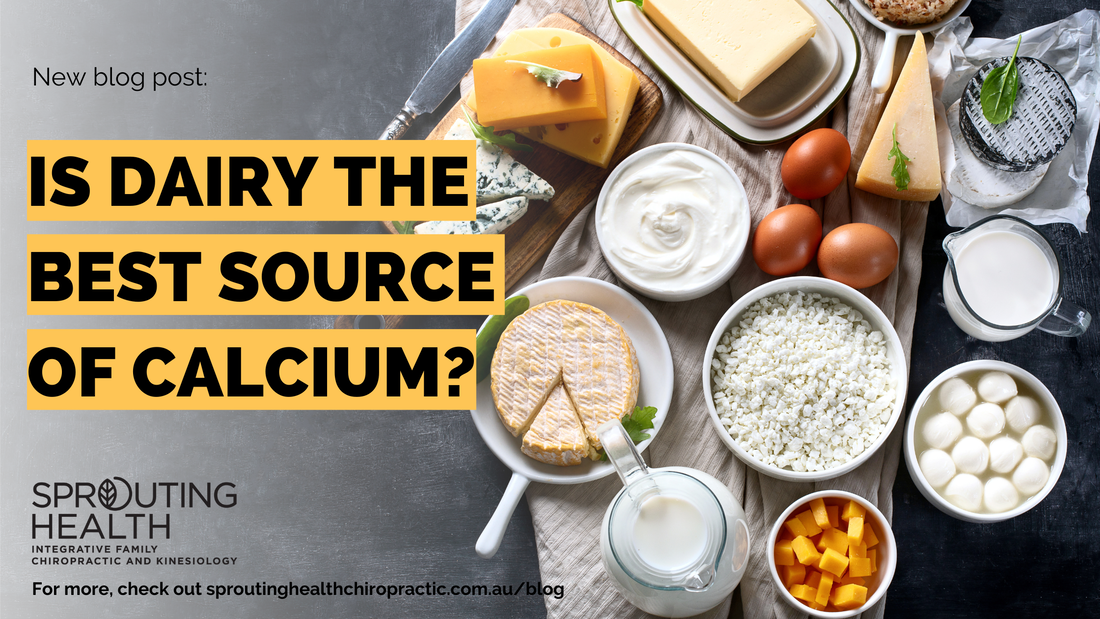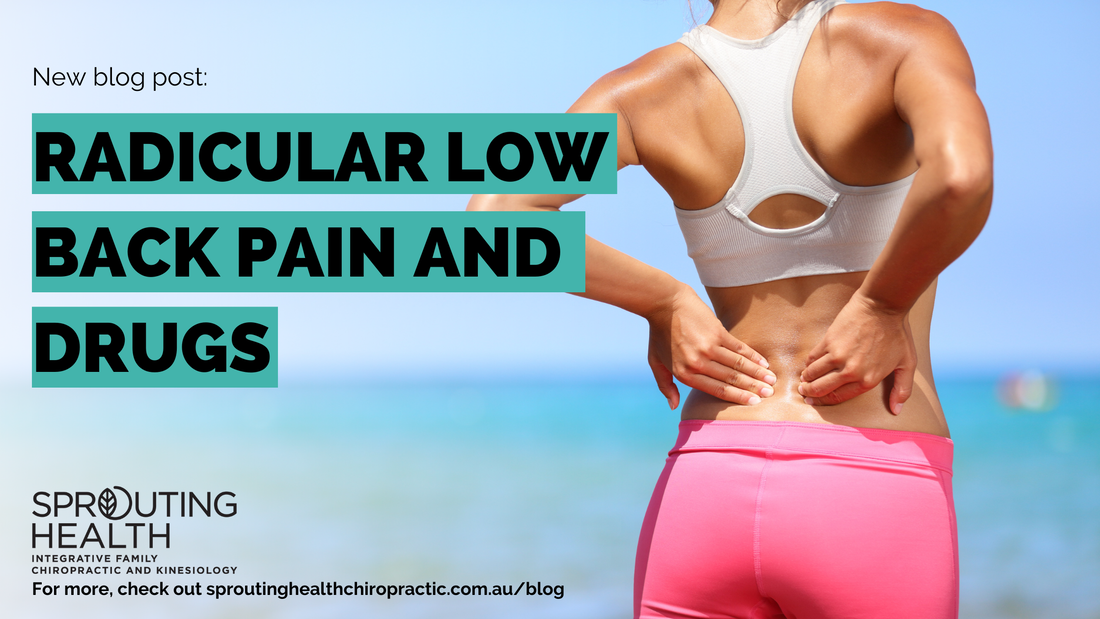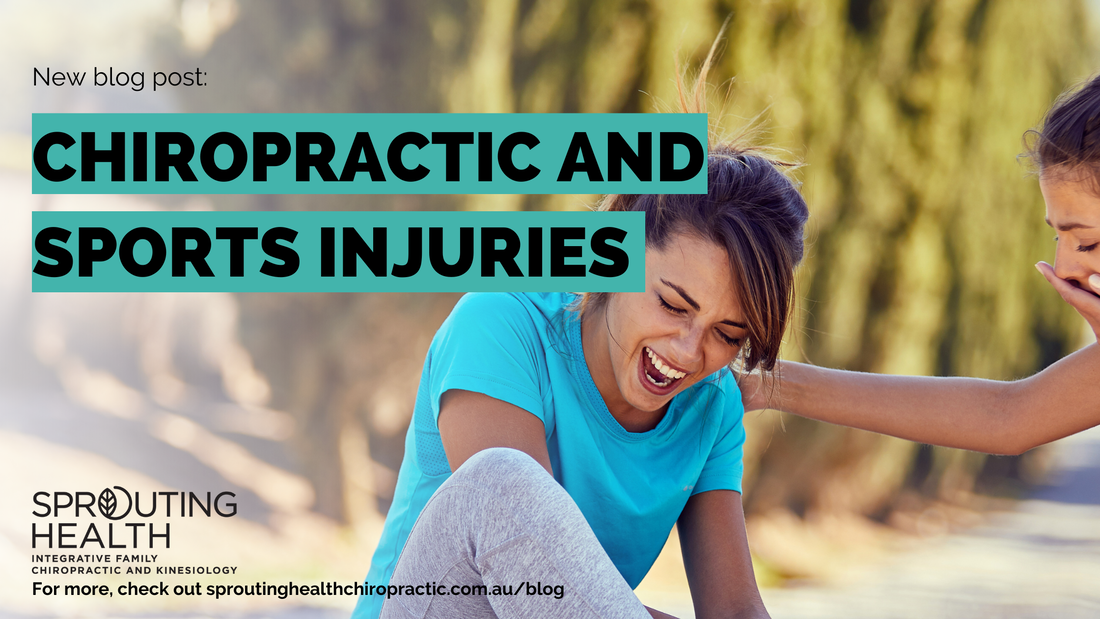|
Today, we want to talk to you about an extremely common discussion that we have in practice around gut health; calcium vs dairy. We have been taught for years that dairy is an excellent source of calcium, but it is time to challenge the status quo?
Calcium is very important to enhance bone mineral deposition, and low calcium intake in children can contribute to rickets in combination with poor vitamin D and genetics. Currently it is recommended that infants have 300mg/day, children have 500-800mg/day and adults have 800-1000mg/day. (1-6) We also know that calcium is important in the prevention of osteoporosis. A 12 year Harvard study of 78,000 women who drank 3 glasses of milk a day had a higher risk of hip and forearm fracture than those who dank one or less glasses per week. Another study from Sydney found high dairy consumption was associated with an increased risk of fracture. The countries with the highest rates of osteoporosis (US, England, Sweden & Finland) are the ones where people drink the most milk. (1-4) So, now we come to the dairy challenge. Yes, it is high in calcium, but the bioavailability is actually rather low (30%), especially when compared with other sources such as brussels sprouts (64%), mustard greens (58%), or broccoli (53%). In fact, the animal proteins in dairy increase the excretion of calcium through urine. It has also been suggested that the daily recommended quantities are linked with increases in the risk of cancers, autoimmune diseases, ear infections and allergies in children, heart disease, and diabetes. (1-3) What can I do to help my bone health if dairy is not the answer? Well, increasing fruit and vegetable intakes will help, limiting animal proteins, regular exercise and getting enough vitamin D.
0 Comments
Lower back pain can seriously affect the quality of life, and has become the leading cause of years lived with disability worldwide when compared with other chronic diseases or disorders (1). Do you or a loved one experience low back pain? This is an important article that can make the world of difference for you.
“1 in 6 Australians (16%) have back problems” (2) Radicular low back pain is a common type of back pain that involves a nerve root lesion, and is considered a type of neuropathic pain, involving radiating symptoms accompanying back pain (3). It commonly results from either disc herniation or spondylosis, with the disc herniation being either due to an acute injury or secondary to chronic degeneration of the spine (4). Gabapentin is a common pharmaceutical that is used for neuropathic pain, and has been used for treating neuropathic symptoms of radicular low back pain (5). However there is growing evidence of the risks of taking gabapentin including abuse, misuse, dependence and withdrawal (6). Along with potential adverse effects such as somnolence, dizziness, ataxia and fatigue (7). If possible it would be better to manage radicular low back pain more conservatively. Can chiropractic help manage radicular low back pain? In a recent research literature, 3,270 patient records were looked at retrospectively. They compared 1,635 patients who have received chiropractic care and 1,635 patients who have received usual medical care after a new diagnosis of radicular low back pain. A one year follow up was looked at after the initial diagnosis for both groups. The results from this retrospective cohort study found that the patients receiving chiropractic care for a new diagnosis of radicular low back pain had significantly lower odds of receiving a gabapentin prescription over 1 year follow up compared with those who received usual medical care (3). Though more cases need to be looked at to further substantiate these findings, early findings indicate a positive outcome for radicular low back pain management with chiropractic care, with good odds in helping a patient to lower the likelihood of having to resort to pharmaceuticals for support. So if you want to find out if chiropractic care may help manage low back pain for you or your loved ones, have a chat with one of our chiropractors to see how they can assist. “The more conservative approach for health is most commonly the safer approach” 1. James, S.L., Abate, D., Abate, K.H., Abay, S.M., Abbafati, C., Abbasi, N., Abbastabar, H., Abd-Allah, F., Abdela, J., Abdelalim, A. and Abdollahpour, I., 2018. Global, regional, and national incidence, prevalence, and years lived with disability for 354 diseases and injuries for 195 countries and territories, 1990–2017: a systematic analysis for the Global Burden of Disease Study 2017. The Lancet, 392(10159), pp.1789-1858. 2. Australian Bureau of Statistics ABS (2019a) Microdata: National Health Survey, 2017–18. 3. Trager, R.J., Cupler, Z.A., Srinivasan, R., Casselberry, R.M., Perez, J.A. and Dusek, J.A., 2023. Association between chiropractic spinal manipulation and gabapentin prescription in adults with radicular low back pain: retrospective cohort study using US data. BMJ open, 13(7), p.e073258. 4. Dydyk, A.M., Khan, M.Z. and Singh, P., 2019. Radicular back pain. 5. Morlion B. Pharmacotherapy of low back pain: targeting nociceptive and neuropathic pain components. Curr Med Res Opin 2011;27:11–33. 6. Evoy KE, Sadrameli S, Contreras J, et al. Abuse and misuse of pregabalin and gabapentin: a systematic review update. Drugs 2021;81:615–7. 7. Quintero GC. Review about gabapentin misuse, interactions, contraindications and side effects. J Exp Pharmacol 2017;9:13–21. Chiropractic is practiced worldwide and is regulated by law in 40 countries such as the USA, Australia, Germany, France, Brazil, Japan, England, and Denmark. (1) Many (and some very high profile) sporting people are now utilising Chiropractic care to gain a competitive advantage as well as to help alleviate some injuries.
We will now look at the evidence behind the injuries that have been most studied with Chiropractic care and sport. Remember to get this level of data, thousands of dollars need to be spent and many, many hours need to be devoted to these research studies – so we are lucky to have this data. This is also where conducting more comprehensive research on the mentioned data and other sport injuries is always essential. The high level studies results showed the influence of chiropractic on improvement of neck pain, shoulder and neck trigger points, and sport injuries. A systematic review (very high level of evidence) evaluating chiropractic effectiveness in prevention and treatment of sport injuries also showed that chiropractic is significantly more effective than conventional treatments in prevention of lower limb muscle strain, hallux adbducto valgus (bunion), and lateral epicondylitis (tennis elbow). At sprouting health we utilise a multimodal approach of looking at the body from a chemical, mental and physical model. If you would like to see if we can help you achieve faster recovery and better performance come in for an evaluation at Sprouting Health. We won’t waste your time and let you know from the first visit if we can help manage your goals.
|
AuthorBlogs by the team at Sprouting Health Archives
July 2024
Categories |




 RSS Feed
RSS Feed
